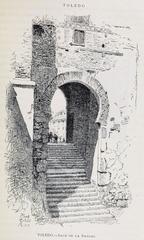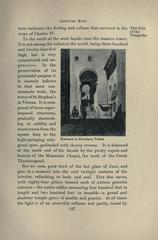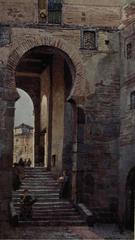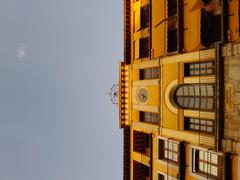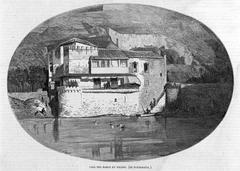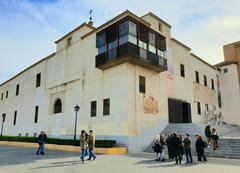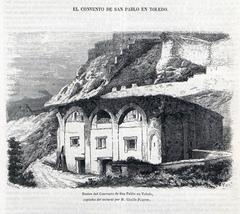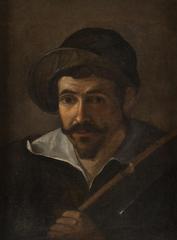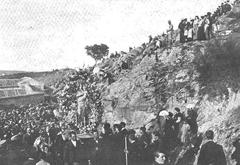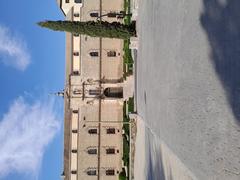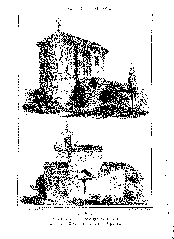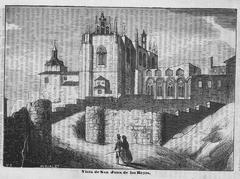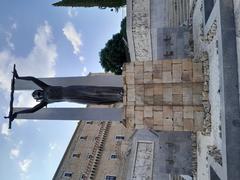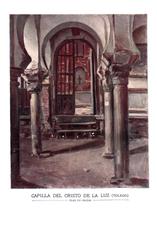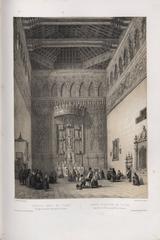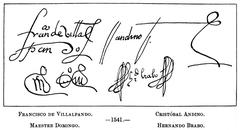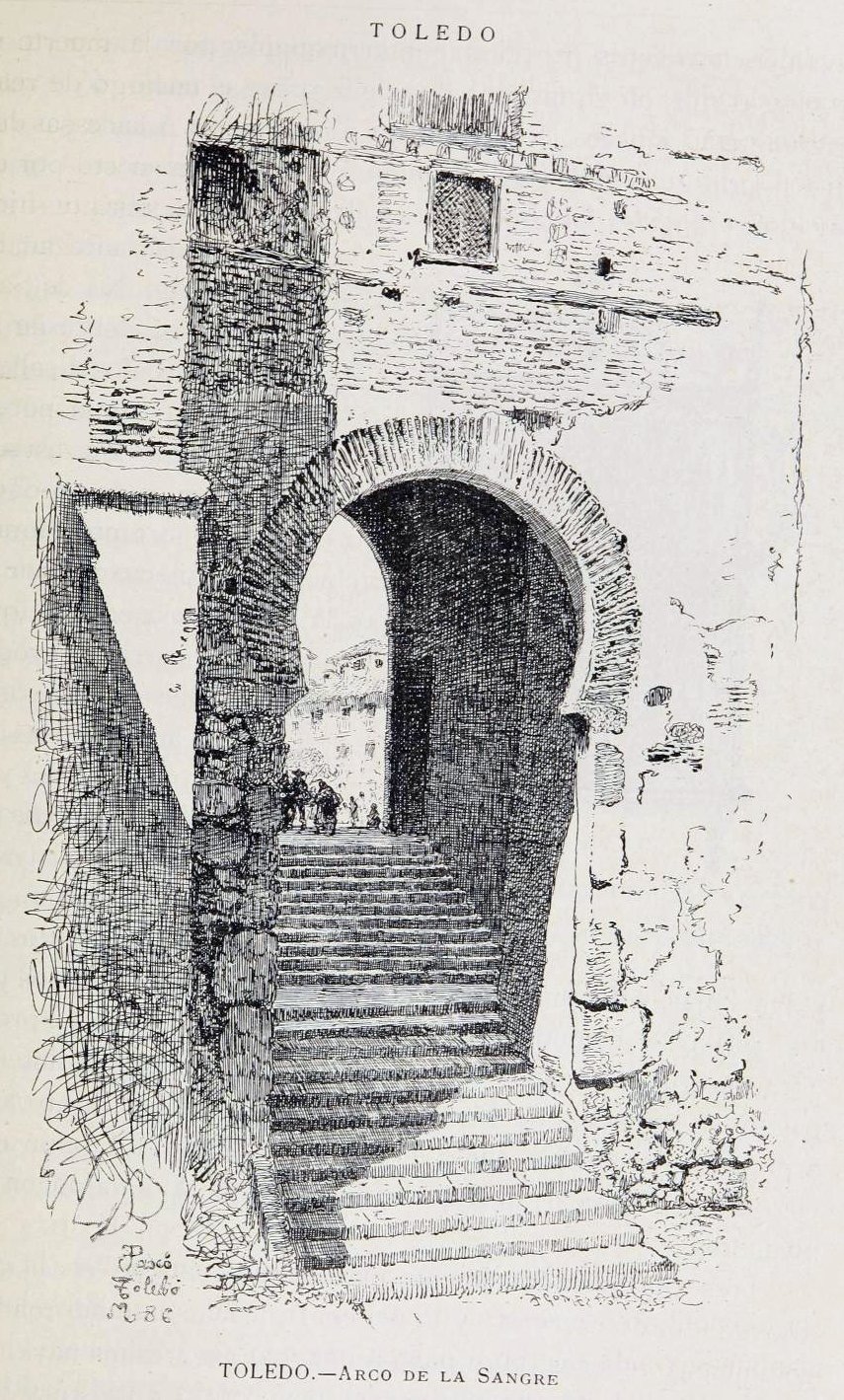
Visiting Arco De La Sangre: Hours, Tickets, and Historical Sites in Toledo
Date: 17/08/2024
Introduction to Arco De La Sangre
Welcome to the Arco de la Sangre, a gateway that stands as a testament to the rich tapestry of history and culture in Toledo, Spain. Located on the eastern side of the Plaza de Zocodover, this monumental arch, also known as the Blood Arch, is a significant historical landmark with roots tracing back to the Arab period. Originally named Bab-al-Yayl, meaning ‘Gate of the Horses,’ it has evolved through centuries of Toledo’s complex history (Wikipedia). As a horseshoe arch, it showcases the influence of Islamic architecture, a style that profoundly impacted the Iberian Peninsula during the Moorish occupation (Lonely Planet).
The Arco de la Sangre has not only withstood the ravages of time but also significant historical events, including the Spanish Civil War, during which it remarkably remained standing despite extensive damage to surrounding structures (Toledo Spain). The arch also houses a small chapel above it, dedicated to the Christ of the Blood, adding a layer of religious significance and continuing the Arab tradition of placing oratories over city gates (Toledo Spain).
This comprehensive guide aims to provide you with all the essential information for visiting Arco de la Sangre, from its historical and architectural significance to practical travel tips and nearby attractions. Whether you are a history enthusiast or a curious traveler, the Arco de la Sangre offers a unique glimpse into Toledo’s multifaceted heritage.
Table of Contents
- Introduction
- Origins and Architectural Significance
- Historical Context and Evolution
- Religious and Cultural Significance
- The Brotherhood of the Christ of the Blood
- Destruction and Reconstruction
- Literary References
- Modern-Day Relevance
- Visitor Information
- FAQ
- Conclusion
- References
Origins and Architectural Significance
The Arco de la Sangre, or Blood Arch, is a monumental gateway located in the historic city of Toledo, Spain. This arch is situated on the eastern side of the Plaza de Zocodover, connecting with Calle de Cervantes (Wikipedia). The arch’s origins trace back to the Arab period, where it was known as Bab-al-Yayl, meaning “Gate of the Horses” (GPSmyCity). This name reflects its function as a passageway for horses and other traffic between the Alcazaba (fortress) and the Medina (city center).
The Arco de la Sangre is a horseshoe arch, a common feature in Islamic architecture, which was later integrated into the city’s defensive walls. This architectural style is characterized by its rounded, horseshoe-like shape, which was prevalent in the Iberian Peninsula during the Moorish occupation (Lonely Planet).
Historical Context and Evolution
During the Muslim invasion, the arch served as a crucial part of the city’s fortifications. It was later renamed Puerta Alfadá or Puerta de la Explanada, reflecting its evolving role in Toledo’s urban landscape (Toledo Spain). The arch was integrated into the inner wall of the Alficén, which encircled the entire city, providing a robust defensive structure.
The Arco de la Sangre has witnessed significant historical events, including the Spanish Civil War. Despite the extensive damage to surrounding buildings during the war, the arch remarkably remained standing (Wikipedia). This resilience underscores its architectural strength and historical importance.
Religious and Cultural Significance
The name “Arco de la Sangre” is derived from the presence of a small chapel above the arch, which houses the image of the Christ of the Blood. This chapel is usually closed but opens during Holy Week, allowing visitors to view the sacred effigy (Toledo Spain). The image of Christ of the Blood is associated with an old brotherhood founded during the reign of Sancho III. The chapel itself was established later, during the reign of Henry IV.
This location follows the Arab custom of placing an oratory over city gates and arches to bless travelers as they departed the city. The chapel originally had three balconies that opened to reveal the sacred image, a tradition documented in the “New Guide of Toledo” (1892) by Marina (Toledo Spain).
The Brotherhood of the Christ of the Blood
The Brotherhood of the Christ of the Blood, along with the Brotherhood of the Holy Charity, played a significant role in Toledo’s social and religious life after the Reconquista. Founded by the Cid Campeador, these brotherhoods provided essential services, such as spiritual assistance and burial for the poor and executed (Toledo Spain). The Brotherhood of the Christ of the Blood focused on spiritual support, while the Brotherhood of the Holy Charity funded burials.
In the center of Zocodover, the deceased were displayed in an oval temple called the “Clavicote,” seeking alms for their burial. During events in the square, this Clavicote was moved under the Arco de la Sangre (Toledo Spain). This practice highlights the arch’s role not only as a physical gateway but also as a spiritual and communal focal point.
Destruction and Reconstruction
The Arco de la Sangre and its chapel have endured multiple instances of destruction and reconstruction. The chapel suffered significant damage during the Spanish Civil War, and the original image of the Christ of the Blood was destroyed during the siege of the Alcazar. The current arch, as it stands today, was rebuilt in 1945 (Toledo Spain).
Photographs from the Municipal Archive of Toledo show the Christ of the Blood as it was preserved until 1936. The current image in the chapel is a replica, installed after the original was lost during the war (Toledo Spain).
Literary References
The Arco de la Sangre has also found its place in Spanish literature. In “El diablo cojuelo” (1641) by Luis Vélez de Guevara, the arch is mentioned in the context of the neighborhood called “Sangre de Cristo” and the “mesón de la Sevillana,” highlighting its cultural significance during that period (Wikipedia).
Modern-Day Relevance
Today, the Arco de la Sangre stands as a testament to Toledo’s rich historical and cultural heritage. It serves as a gateway for visitors exploring the city’s medieval streets, stunning cathedrals, and captivating museums. The arch’s historical significance and architectural beauty make it a must-visit destination for anyone interested in Spain’s diverse cultural landscape (Exploding Travel).
Visitor Information
- Visiting Hours: The Arco de la Sangre is accessible to the public 24 hours a day. The chapel above the arch is typically closed but opens during Holy Week.
- Tickets: There is no entrance fee to visit the Arco de la Sangre.
- Travel Tips: Wear comfortable walking shoes, as Toledo’s streets can be uneven and hilly. Consider taking a guided tour to learn more about the arch and its surrounding landmarks.
- Nearby Attractions: While visiting the Arco de la Sangre, you can also explore the Plaza de Zocodover, the Alcazar of Toledo, and the Toledo Cathedral.
- Accessibility: The area around the Arco de la Sangre is accessible on foot, but it may be challenging for those with mobility issues due to the uneven terrain.
FAQ
Q: What are the visiting hours for the Arco de la Sangre? A: The Arco de la Sangre is accessible 24 hours a day. The chapel above the arch opens during Holy Week.
Q: Is there an entrance fee to visit the Arco de la Sangre? A: No, there is no entrance fee.
Q: Are there guided tours available? A: Yes, guided tours are available and recommended to fully appreciate the historical context of the Arco de la Sangre.
Q: What are some nearby attractions? A: Nearby attractions include the Plaza de Zocodover, the Alcazar of Toledo, and the Toledo Cathedral.
Conclusion
The Arco de la Sangre is not merely an architectural landmark but a living monument that encapsulates the diverse cultural and historical narratives of Toledo. From its origins as Bab-al-Yayl during the Arab period to its role in the medieval fortifications and its religious significance as the site of the Christ of the Blood chapel, the arch stands as a testament to Toledo’s rich and complex history (GPSmyCity). Its resilience through events like the Spanish Civil War and the subsequent reconstructions highlight its enduring importance to the city (Wikipedia).
Today, the Arco de la Sangre continues to be a focal point for visitors exploring Toledo’s historical landscape. It offers not only a window into the past but also a gateway to the vibrant cultural life of the city, with nearby attractions like Plaza de Zocodover, Alcazar of Toledo, and the Toledo Cathedral providing a rich and immersive experience (Exploding Travel). As you walk through this iconic arch, you are stepping into a narrative that spans centuries, blending Islamic, Christian, and Jewish influences into a unique cultural mosaic.
Whether you are visiting for its historical significance or simply to marvel at its architectural beauty, the Arco de la Sangre is a must-see destination. Don’t forget to explore our other articles on Toledo’s historical sites and download the Audiala app for more travel tips and guides. Follow us on social media for the latest updates and inspiration for your next trip.
